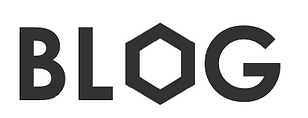
Post
As cities strive to become more sustainable, many are exploring the possibility of transitioning their public transportation fleets to zero-emission buses (ZEBs). This transition not only helps reduce greenhouse gas emissions but also provides a healthier environment for residents by reducing air pollution. Although purchasing and maintaining ZEBs can be a financial obstacle for transit agencies, the Low or No Emission Vehicle Program (Low-No Grant Program) offers a golden opportunity for these agencies to make the transition to sustainable, eco-friendly transportation.
What Is the Low-No Emissions Grant Program?
The Low-No Grant Program is a government initiative aimed at reducing emissions from transit buses in the United States. The program was created as part of the Bipartisan Infrastructure Law, which President Biden signed in November 2021. Its primary goal is to provide funding to state and local governmental authorities to purchase or lease low- or no-emission transit buses and the necessary supporting infrastructure.
The program is significant in that it seeks to address the environmental impact of transportation by promoting the adoption of sustainable modes of public transit. This includes the use of electric or hydrogen fuel cell-powered buses, which have been shown to significantly reduce emissions and improve air quality.
The program provides $5.5 billion in funding over a five-year period, which began in 2022. The funding is distributed among state and local governmental authorities based on their application for the grants. For the fiscal year 2023, $1.2 billion in funding is available under the program. This funding will support state and local governments in transitioning to low- or no-emission transit buses and building the necessary infrastructure to support these vehicles. By providing this funding, the program seeks to accelerate the adoption of sustainable public transit, reduce greenhouse gas emissions, and improve air quality in communities across the United States.
What Projects Are Eligible for the Low-No Grant Program?
Eligible projects under the Low-No Grant Program include:
- Purchasing or leasing low- or no-emission buses
- Acquiring low- or no-emission buses with a leased power source
- Constructing or leasing facilities and related equipment for low- or no-emission buses
- Constructing new public transportation facilities to accommodate low- or no-emission buses
- Rehabilitating or improving existing public transportation facilities to accommodate low- or no-emission buses
View past funded projects from 2022 in the Low-No Grant Program.
How Much of My Transit Agency's Total Project Can the Low-No Grant Program?
The program covers eligible expenses related to compliance with the Clean Air Act and the Americans with Disabilities Act. If a transit agency is leasing or purchasing a transit bus, the federal share of the cost cannot exceed 85% of the total transit bus cost. However, if the transit agency is leasing or acquiring low- or no-emission bus-related equipment and facilities, the federal share can cover up to 90% of the net project cost.
To qualify for the increased federal share, applicants must specify the activities related to low- or no-emission bus-related equipment and facilities in their grant application. This information will be used to determine the amount of funding the transit agency will receive. Therefore, it is important for transit agencies to be specific in their grant application about the low- or no-emission bus-related equipment and facilities they plan to lease or acquire, which will maximize their chances of receiving the increased federal share.
In addition, 0.5% of a request may be for workforce development training, and an additional 0.5% may be for training at the National Transit Institute (NTI). Applicants proposing any project(s) relating to zero-emission vehicles must also spend 5% of their award on workforce development and training as outlined in their Zero-Emission Transition Plan unless the applicant affirms their financial need is less.
How Does My Transit Agency Start Transitioning to a ZEB Fleet?
Joining the FTA’s Climate Challenge is a great way to get sustainability planning and strategizing assistance. The FTA recommends considering the information contained in the Guidebook for Deploying Zero-Emission Transit Buses recently published by the Transit Cooperative Research Program. This guidebook provides a comprehensive overview of the steps transit agencies should take when transitioning to a ZEB fleet.
In addition, transit agencies should consider implementing ZEB software as part of their plan. ZEB software can help agencies understand the actual cost of ZEBs by integrating all operation and maintenance data into one consolidated platform.
Transition to a Zero-Emission Bus Fleet
The Low or No Emission Vehicle Program is a great opportunity for transit agencies looking to transition to zero-emission bus fleets. The program provides funding for the purchase or lease of zero-emission and low-emission buses as well as the acquisition, construction, and leasing of required supporting facilities. Transit agencies can also receive sustainability planning and strategizing assistance through the FTA’s Climate Challenge.
TransTrack’s Zero-Emission Bus (ZEB) Module is a valuable tool for transit agencies looking to make the shift towards ZEBs. The module integrates all of a transit agency's data sources into a consolidated platform for enhanced performance monitoring and reporting. Get transparent operation and maintenance costs, better understand your vehicle charging data, and acquire reputable data based on our Emissions Factor Modeling. That way, you can make educated decisions about service levels for your agency.
If you are a transit agency looking to transition to a zero-emission bus fleet or want to learn more about how TransTrack’s ZEB Module can benefit your agency, speak to one of our industry experts today to request a demo.


